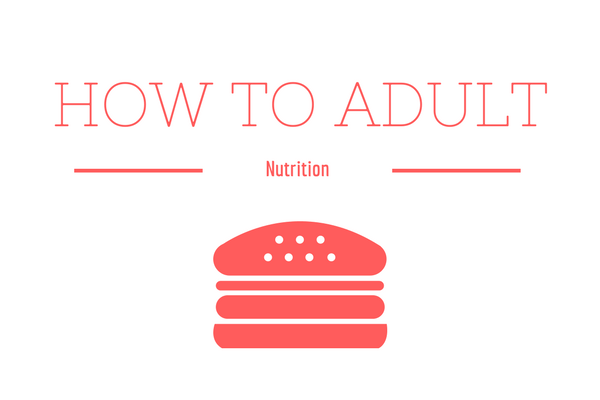
Photo by Grant Baker
Use these tips to ensure a happier and healthier lifestyle
How to Adult: Nutrition
Your body is a temple- so why does it seem so impossible to properly nourish and take care of? As our bodies grow and teenagers are left to feed themselves most of the time, it becomes our responsibility to monitor what goes into our bodies. While it would be fun to live off Takis and Whataburger for most of our lives, the fact is that a healthy diet with plenty of nutrients and variety helps humans to live a longer and healthier life. Whether you’re trying to gain muscle, shed or gain pounds or just want to maintain a healthy weight, here’s your basic guideline to a healthy diet.
Calories:
Calories are relatively easy to count, and a healthy daily calorie intake would add up to about 2,000 calories – slightly more for boys and slightly fewer for girls, and will vary with age, height and activity level. To get a specific intake best for for you, there are calculators available online.
Protein:
According the the Dietary Reference Intake (DRI), the exact amount of protein you need is directly correspondent to your individual weight and size. As a rule, at the very least, girls should try to consume 35 grams of protein and boys should consume 40 grams of protein per day, however, higher activity levels will require more. The best time to consume protein is at breakfast, and protein is especially important if you are trying to lose weight. In other words, if you want to maintain or lose weight healthily: get your protein, and lots of it!
Carbohydrates:
There’s a good reason carbs sit at the base of the food chain -— in terms of getting nutrients and maintaining weight, carbs are essential to your diet. However, if you are looking to lose weight, carbs like bread will be the first thing to drop from your diet. When it comes to carbs, the best way to incorporate them would be through vegetables, including starchy vegetables like corn and potatoes as well as nuts and beans which are dense in both carbs and protein. When it comes to foods like bread and pasta (the most well-known and common ways to consume carbs), stay away from white bread and instead switch to bread and pasta made from whole grains, or even explore gluten-free options made from rice or other substitutes. All in all, limit your consumption of breads and pastas.
Sugars:
Whether we like it or not, sugar is often incredibly common, even in foods considered healthy such as fruits and yogurt. The difference lies between natural and added sugar. The most important thing is to try to avoid foods with large amounts of added sugar, whereas foods with natural sugar should be considerably less limited in your diet.
Fats:
Fats in the nutrition facts box are divided into saturated fats and unsaturated fats, and you should be more wary of saturated than unsaturated fats. Fats are very abundant in dairy products such as cheese and butter as well as oils, so use them sparingly; besides that, healthy foods that include high concentrates of fat also include eggs, nuts and avocado; however, fats, too, should be limited in your diet.
Fiber:
Often an overlooked part of a healthy diet for a teenager, fiber is very important to reach a healthy weight, often when losing weight, as well as maintaining digestive health and healthy blood sugar and cholesterol levels. In other words, even though you might not immediately and fully recognize the benefits of eating enough fiber, when you do get enough, it is the epitome of doing good for your body solely for the sake of your own health.
In reality, the human body is complex. There’s an infinite amount of dietary tips, plans, restrictions and programs, but these are the basic building blocks of a happy life and a healthy diet. Living healthfully doesn’t have to be expensive or difficult and it most certainly doesn’t come in the form of a pill or a crazy program. Take care of your body and you will set yourself up for a long and healthy life.